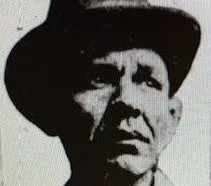
Appeal made on behalf of Louisiana man’s killer
Editor’s note: Following is the fourth part of a story series by contributing writer Brent Engel.
Being sent to prison for the murder of a Louisiana man did not stop questions about the culprit.
Twenty-two-year-old Arthur Barnes was sentenced to life behind bars for the February 1925 murder of Stark Brothers employee Carl Shumaker. He might have gotten the death penalty if his mother had not written a heartfelt plea for mercy.
Barnes had been locked up for just two months when a gun used in the Dec. 2, 1924, robbery of a Quincy paper mill where he once worked was found in a watery hole beneath the outhouse of a Quincy home at which the former Louisiana resident lived.
Authorities believed the gun also was used in the murder of Quincy restaurant employee Mark Gallamore on Feb. 1, 1925.
Three masked men entered the eatery at Fourth and Broadway just after 8:30 p.m. Gallamore was 42, unmarried and lived above the business.
He was gunned after refusing an order by the robbers to put his hands up. The Quincy Whig-Journal offered an account based upon information from three customers.
“What will we do, boys?” the paper quoted one of the bandits as asking.
“Pop him,” came the response from another.
During the Shumaker murder investigation, Barnes claimed he was at the dentist’s office during the paper mill robbery and at his sister-in-law’s home during the Gallamore killing. On May 9, 1925, he confessed to being involved in those crimes and others, including a grocery store robbery in Hannibal that happened on Valentine’s Day.
“I was treated dirty on the Shumaker murder, and I’m going to tell the whole truth,” Barnes told a reporter.
One of the four men implicated as partners in the mill robbery was 18-year-old Clarence Baker, who would be an accomplice in the Shumaker killing.
The take from the heist amounted to what today would be more than $27,000. When detectives arrived at Barnes’ house for questioning, the money was laid out on the kitchen table. His wife, Elsie, was not home, and officers never got past the front door.
Barnes accompanied the cops back to the police station and gave them the dentist visit ruse.
He didn’t mind leaving his two young children for several hours in the care of another gang member, a drug addict whom Barnes referred to as “a doper.” But he wasn’t about to trust his other criminal cohorts, quickly pocketing what would now be $12,000 and leaving the rest to be split by the gang.
“I wanted my money,” he explained. “A crook is a crook. They will beat one another if they can.”
Barnes made a down payment on a new car and bought Christmas presents, but blew most of the loot gambling.
In his May confession, Barnes admitted firing the shot that killed Gallemore. The other two conspirators allegedly were Baker and a paroled federal prisoner named Jim Smith, who also faced charges of stealing a car and robbing a food truck.
The three had also stolen dynamite from a Quincy company on Jan. 15, 1925, with the idea of using it in the robbery of an Elsberry bank. Nothing resulted from the intention.
Barnes claimed Smith ordered him to shoot Gallemore, which Smith denied. Barnes did have the gall to go back to the restaurant the day after the shooting and buy cigarettes.
“They told me all about how the shooting had happened,” he said. “And I took it all in.”
Smith’s landlady called her tenant “bald and ugly,” but added that in the two years he had roomed there he “never did anything suspicious” and “behaved like a gentleman.”
Gallamore’s brother said he believed Barnes’ confession and, his voice trembling with fury and sorrow, offered authorities a way to close the case.
“If they’ll just let him loose on the street for five minutes, they won’t have to try him,” W.F. Gallamore said
Next time: A final surprise.